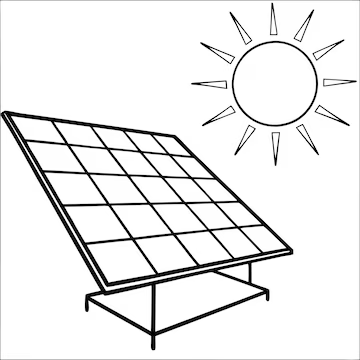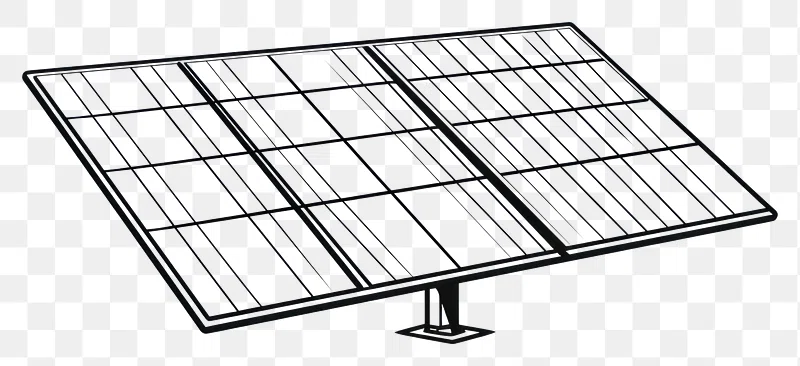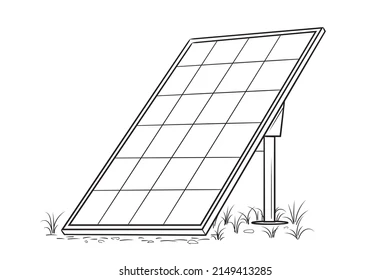Ever wondered if a pencil could do more than just scribble notes or sketches? Well, it turns out that a pencil—yes, the same one you use to write—could be used to make solar cells!
“Solar cells hecho con lápiz” (solar cells made with pencil) is an exciting concept that is gaining traction for its low-cost, eco-friendly nature. But how is it even possible, and why does it matter?
Imagine harnessing the sun’s power without needing expensive materials or high-tech machinery. With this simple idea, solar technology is becoming more accessible. Let’s take a closer look at how this all works and why it’s creating such a buzz.
The Science Behind Solar Cells Hecho Con Lápiz
At first glance, the idea of making solar cells with something as common as a pencil might sound like science fiction. But it’s not! Here’s a breakdown of how it works:
- Carbon from Pencils – The core of your standard pencil is made of graphite, a form of carbon. It turns out that carbon is a great conductor of electricity, which makes it a perfect candidate for creating solar cells.
- Creating the Solar Cell – The process involves using graphite to form the layers of the solar cell. By sketching on a piece of paper with a pencil, you can create a thin film of graphite. This film can then be treated to act as a conductor, allowing the solar cell to capture sunlight and convert it into electrical energy.
- Cost-Effective – The materials needed to make these solar cells are super affordable. Instead of using expensive silicon, graphite—available in every pencil—is an effective alternative. This makes solar energy more accessible to individuals, schools, and organizations with limited budgets.
By harnessing the power of sunlight with a pencil, solar cells hecho con lápiz promise to revolutionize the way we think about renewable energy.
Why Solar Cells Hecho Con Lápiz Are a Game Changer
In the age of rising energy costs, solar energy is gaining momentum as a sustainable and affordable solution. But traditional solar panels can be expensive to produce and install. This is where solar cells hecho con lápiz come in. By utilizing materials that are already cheap and widely available, the process becomes a viable option for low-cost solar energy.
But don’t just take my word for it! Take a look at how schools and small communities are jumping on board to make their own solar cells. For example, in rural areas where access to affordable electricity is limited, students have used this technology to create their own energy sources for small devices. It’s a simple yet powerful innovation.

Real-Life Application: Solar Cells Hecho Con Lápiz in Action
The idea of solar cells hecho con lápiz isn’t just an experiment—it’s making waves in real-world applications.
For instance, researchers have already successfully used this method to create small solar-powered devices, such as solar-powered lights for low-income households. Imagine kids studying at night without having to worry about paying for electricity or relying on unreliable sources.
It’s not just limited to small gadgets, either. Some inventors are exploring how to use these pencil-based solar cells for larger applications, such as charging smartphones or powering small appliances.
The best part? The process is relatively easy to replicate, meaning it has huge potential for DIY solar energy projects.
Solar Cells Hecho Con Lápiz: How You Can Make Your Own
Curious about trying it for yourself? Here’s a quick overview of how you can make your very own solar cell using just a pencil and a few other materials:
- Materials Needed:
- A pencil (preferably 2B for its higher graphite content)
- A piece of paper
- A piece of copper tape
- A few wires
- A small LED light
- Steps:
- Start by drawing with the pencil on a piece of paper to create a solid layer of graphite. This will form the base of your solar cell.
- Attach the copper tape to the edges of the graphite layer to help with the conduction of electricity.
- Connect wires to the copper tape and attach the LED light.
- Finally, expose your creation to sunlight and watch as it powers the LED light!
It’s a fun, simple project that demonstrates the power of solar energy using nothing more than a pencil and a few basic materials.
FAQs About Solar Cells Hecho Con Lápiz
How long do solar cells hecho con lápiz last?
While solar cells made with pencils are a great start, they’re not as durable or efficient as commercial solar panels. These homemade cells typically last for a few months or until they lose their ability to conduct electricity due to wear and tear. However, researchers are working on making them more durable and long-lasting.
Can solar cells hecho con lápiz power my entire home?
Not yet. These cells are more suited for small, low-power applications, like charging small devices or powering lights. But in the future, with advancements in materials and techniques, they could become a more viable option for larger-scale power generation.

Are solar cells hecho con lápiz better than traditional solar panels?
While solar cells hecho con lápiz are a fun and innovative idea, traditional solar panels made from silicon are much more efficient at harnessing sunlight. However, the key advantage of pencil-based solar cells is their low cost, which could make them an attractive option in areas with limited resources.
Are there any risks or downsides?
One potential downside of solar cells hecho con lápiz is that the graphite layers may degrade over time, reducing efficiency. Additionally, creating a large number of these cells may take some time, and they are not yet a replacement for more established solar technology.
The Future of Solar Cells Hecho Con Lápiz
So, is the future of solar energy written in pencil? While it’s unlikely that solar cells hecho con lápiz will replace traditional solar panels anytime soon, they offer a glimpse into how we can use everyday materials to create renewable energy sources.
By lowering the barrier to entry for solar energy, these pencil-based cells could make it easier for people all over the world to access clean, sustainable power. Whether it’s helping students power their lights or sparking new innovations in solar technology, solar cells hecho con lápiz have the potential to make a big impact.

